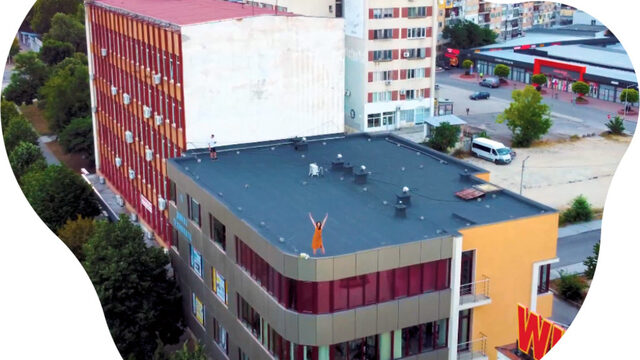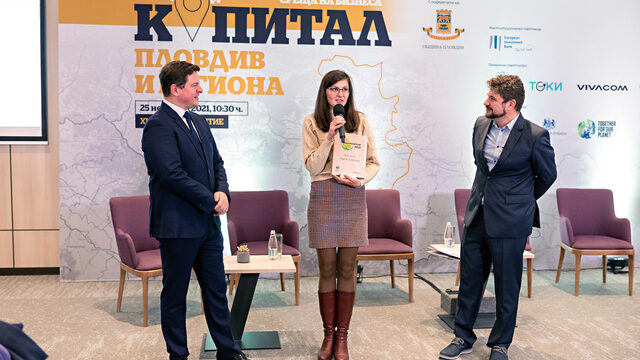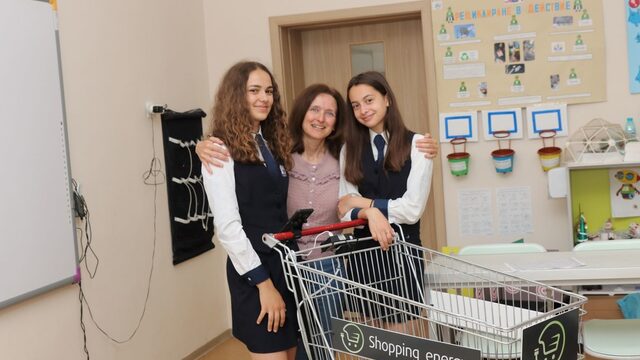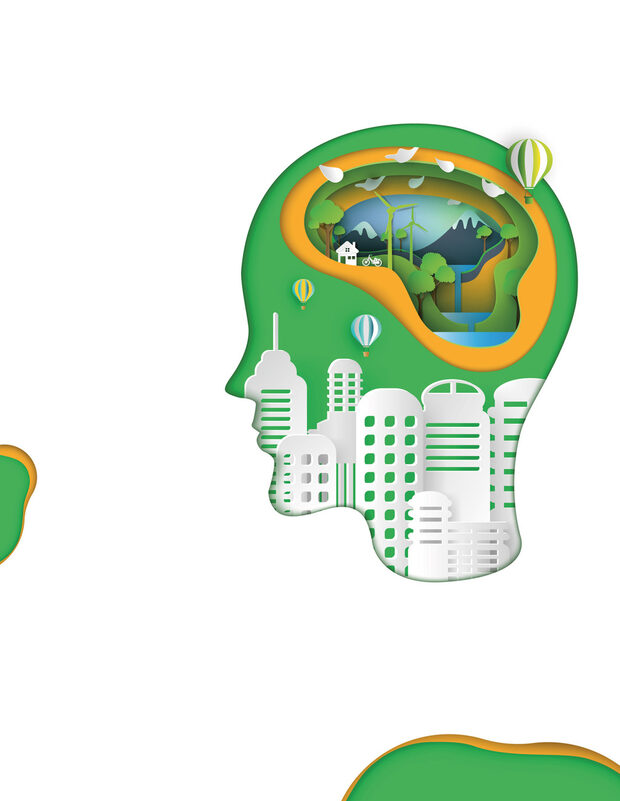This year Capital weekly engaged in something it had considered important for quite some time: we sought, found and rewarded active people from different cities in Bulgaria who have a plan to improve life for their communities.
In this endeavour we got the kind support of the British Embassy, which backed the idea of our Gradolyubiteli ("City Lovers") contest.
The contest built upon the principles behind our Cities project that explores all the possibilities and untapped potential of cities and towns outside of the capital and follows a simple principle: that local communities are built on people with ideas who work to make them happen in the place they live. Also, we tried to fill a gaping hole - there is no funding in Bulgaria for local ideas that are not linked to the municipal authorities. While we wait for that to change, we will continue our "City Lovers" contest along with others who want to help.
You can read about the top three winners of the competition and what they want to achieve below.
Two women on a hot tin roof
Green, or living roofs are an interesting phenomenon in urbanism that aim to solve two problems in cities: the lack of quality green spaces and urban heat - the formation of so-called heat islands, where the temperature in overbuilt concrete and asphalt spaces rises sharply.

While such rooftops have existed in private Bulgarian buildings for over 15 years, they are mostly restricted to privately-owned buildings in Sofia. Now, the first such rooftop will be installed in the town of Dimitrovgrad due to the efforts of ecologist Silvya Savova and urbanist Yordanka Yordanova and their project "An Exemplary Roof," which became the first winner in the "City Lovers" competition. There are several reasons for that:
Apart from integrating several ecologically-friendly trends, the project also has another purpose - to remind city residents that the place they live in can look better. The roof will be open to the public and ought to catalyse change towards urban beautification and improved quality of life. Last but not least - the initiative is easy to copy and spread. If something like this can happen in Dimitrovgrad, why can't it happen everywhere?

"Yordanka and I love to travel. We have seen similar roofs in cities like Madrid and Bangkok," Ms Savova told Capital weekly. The girls draw inspiration from major European cities and global megacities, which have adopted and successfully applied the idea in the fight against climate change and air pollution.
Their plan for the rooftops goes like this: the area of just over 300 square meters will be landscaped with bee-friendly vegetation, solar panels, bird houses and feeders will be installed, as well as bins for separate waste collection. The idea is to turn the roof into a green space for people who don't have access to a park or vegetation nearby and provide them with a place for events and meetings.
The building was built about 12 years ago and houses clothing stores, an internet provider, a training center and other offices. Currently, there is no way to go up to the roof, but the two ladies have already spoken to and received the full support of the tenants before applying for the funding. The latter committed to not only providing access but also helping them with some organisational details, while one company committed to installing solar panels. The award of 7,000 BGN from the "City Lovers" contest will provide them with the necessary funding to put their idea into practice.
Power Rangers from Burgas
Antonia Miteva and Rumiana Ivanova are two eighth graders from Burgas. Three years ago (when they were only fifth graders!),the duo created its own project for a shopping cart that produces electricity, which can be used to charge one's mobile device. Their idea that goes under the name "Shopping Energy" impressed the jury of the "City Lovers" contest that the terms of the competition were changed: instead of two prizes of 10,000 and 5,000 BGN, the amount was divided between three projects. Antonia and Rumiana received 3 thousand BGN and what is much more important in their case - consultation from the Fund of Funds to find partners and develop the idea further.

"We got the idea by accident. While we were shopping in the store, we had to make an urgent phone call, and it turned out that its battery had died. Later, when we were riding bikes, we noticed that their headlights were lighting up while the wheels were turning. We started wondering if this could be applied to supermarket trolleys, so we could charge our phones while we shopped," the two girls told Capital weekly.
With the help of their mentor and teacher Greta Stoyanova, Rumiana and Antonia come up with a working prototype of a shopping cart that generates electricity when it moves. It is a lab-certified prototype that generates electricity as it moves mechanically. The generator is factory built into the wheel, the converter is housed and insulated in a box, the controller is moisture proof. The energy could be used to charge a device while shopping or stored in larger batteries for the store's needs.

A model of the trolley was presented for the first time at the Science Fair at the duo's primary school - the Alexander Georgiev-Kodjakafaljata Primary School in Burgas, which is the first municipal school that gained the status of an innovative institution in 2017. Back then, the girls only had a preview and description of their solution. Today, they have a working and certified prototype, and all the funds for the construction were raised through their participation in various forums and competitions.
Their first big success came at an exhibition of the municipality of Burgas for business ideas of young people. The youngest participants, Antonia and Rumyana, won first place and a donation of 160 BGN, left by visitors. "This was their first money, they invested it in buying a real shopping cart," says Greta Stoyanova.They won two other competitions, which helped them create two more prototypes, while the 3,000 BGN prize from the "City Lovers" competition will will be used to buy a power station, which will store the electricity produced by the trolley.
"So far we have done two tests in a real environment in a large grocery store chain, thanks to which we analyzed the information and redesigned the second prototype. We were able to fix the identified problem where the battery would not charge at low speed. The installed USB voltmeter was reading voltage for a very short period, but only at higher travel speeds. We added a boost converter to the electrical circuit and now the trolley produces power and the battery charges even as users stop between the counters or walk back and forth at low speed," the creators of Shopping Energy explain.
A map of sneezing and swollen eyes
The second runner-up in the contest is the project Pollen-net, an idea of two agronomists and a programmer from Veliko Tarnovo to compile an early warning and forecast system for the presence of pollen allergens. At least 15 percent of the population of Bulgaria suffers from some form of seasonal pollen allergy and would greatly benefit from their work.

The idea started as a sideline for the agronomists who represent the Bulgarian Association for Organic Plant Protection. Roman Rachkov and Valentin Mitkov are principally involved in crop consultancy - when a farmer needs to find out which crop pests are disrupting his crops, he turns to people like them. They decided that, with their knowledge and data they have access to, they can be useful to the public. The idea is to be something very similar to weather forecasts, showing a person on their phone where in their locality there is an increased risk of allergies on a given day.
Their studies to determine the developmental stage of insects and plants are fundamental to the system, allowing them to predict when and what happens to ecosystems. Through the programmer in the team, their insights are tied to information from weather stations so that an accurate forecast can be made. "We already knew what indicators to look for when developing our own weather station that feeds data. The idea was to visualise this information and create a notification system for allergic people. It is a type of a Twitterbot that sends a signal directly to the user's smartphone about when to expect specific types of pollen", Roman Rachkov describes the system.

According to the developers, the project could be self-sustaining by advertising through pharmaceutical companies (who sell the hay fever medication anyway), and the end user would not pay for the service. The revenue would be fully reinvested in the site and app.
The Pollen-net system is not intended to be 100 percent accurate, but ultimately no forecast is. The developers' hope is that the system will be widely used in municipalities and would reach people as soon as possible. That's why the team said they intend to test the system abroad in the spring, while participating in funding competitions there.
This year Capital weekly engaged in something it had considered important for quite some time: we sought, found and rewarded active people from different cities in Bulgaria who have a plan to improve life for their communities.
In this endeavour we got the kind support of the British Embassy, which backed the idea of our Gradolyubiteli ("City Lovers") contest.












